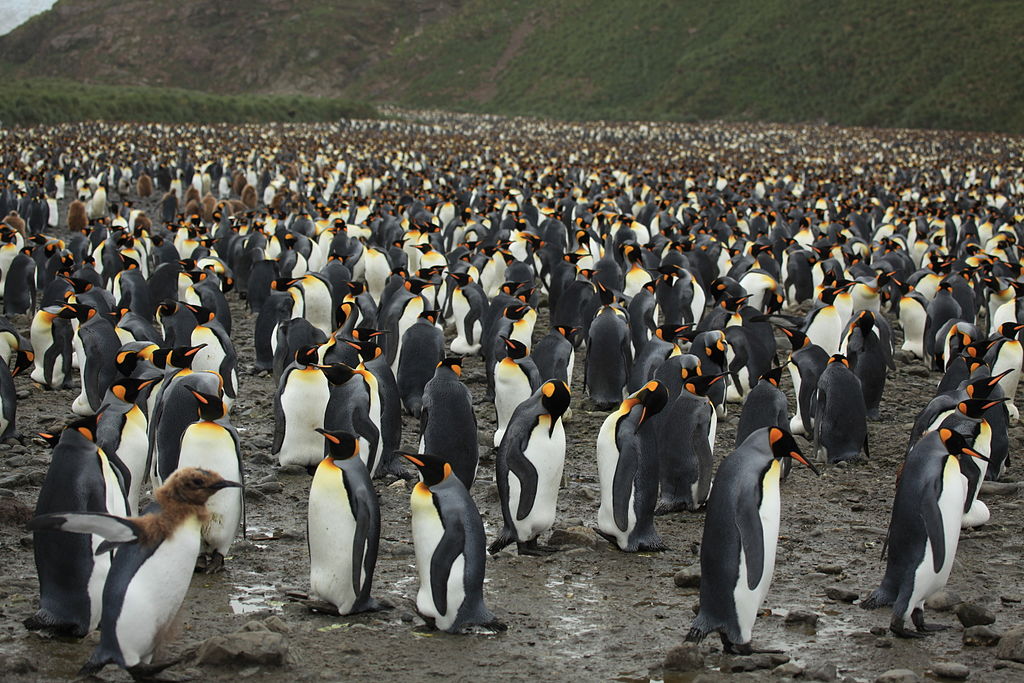How do penguins find their mate in a sea of tuxedos?

Penguin colonies can number tens of thousands, so how do penguins hook up and find their families?
Published 6 November 2015
In many bird species males and females look distinctly different — but penguins don’t appear to have got the memo.
To a human, penguins look like clones; a mass gathering of waddling animals in tuxedos. So how does a female penguin choose a mate and what makes one male penguin more alluring than the next guy?
Dr Peter Dann, Director of the Penguin Foundation, research manager at Phillip Island Nature Parks and an honorary researcher at the University of Melbourne, explains: “Male penguins perform a ‘courtship’ display in front of nesting burrows.
“Research suggests the quality of his burrow may be a factor in the female’s choice as she may inspect the burrow prior to consummating the relationship.”

Although males and females look alike, the males tend to be slightly bigger and have slightly longer beaks, says Dr Dann.
“The bigger or fatter male penguins are also popular with females, possibly because this suggests they’re good fishers. A deeper voice may also help make them more distinctive amongst a colony of thousands.”
So it seems a successful male penguin has the moves, sounds like Issac Hayes and is slightly burly.
The ‘cocktail party effect’
King penguins breed on sub-Antarctic shorelines of the southern hemisphere where the colony head count can be in tens of thousands or more.
Once they couple, the male and female take turns at incubating the egg on their feet and going fishing. So how do they manage to find their way back to their partners among the large throng?
Dr Dann explains: “Studies have shown the adults and chicks find each other acoustically. That means penguins call out to each other and rather amazingly can recognise each other’s calls among the noise.
“It’s called the ‘cocktail party effect’, a term used by scientists who first explored the ability to focus on certain sounds or conversations whilst filtering out a range of background noises.
“Imagine yourself at a noisy party. If your name is being mentioned in a conversation across the room it’s likely you’ll pick that up. It’s as if you can filter, but also scan for recognisable sounds.”

Dr Dann’s research team has watched King penguins in conversation on Heard Island, where students explored parent-chick vocal recognition.
“Parents could recognise the sound of their own chicks, and this is an adaptive feature ensuring a penguin feeds its offspring and not someone else’s chicks. Interestingly, the chicks appeared not able to recognise their parents. It’s possible the chick’s vocabulary and acoustic abilities have yet to develop,” Dr Dann says.
Using the stars
“But penguins do use visual landmarks. We have seen it with the Phillip Island penguin population: when one of the three light towers at the Penguin Parade has blown a bulb they will land onshore at a predictably different point. In the wild there is suggestion they use the stars as a landmark.”
One of Dr Dann’s research projects, supported by Google Challenges fund grants and the Penguin Foundation, in collaboration with Victoria University researcher Professor John Orbell, is focused on developing a new way of cleaning wildlife fouled by oil spills, using a finely ground iron powder and magnetism.
“We’re working on a finely ground magnetic powder that will remove oil more efficiently and effectively. It works for fur seals, and likely for turtles, and marine iguanas, as well as penguins, and we’re very excited at this better approach to caring for damaged wildlife,” Dr Dann says.
Banner Image: A colony of 200,000 King penguins on the Salisbury Plain, South Georgia Islands. Picture: Wikipedia

